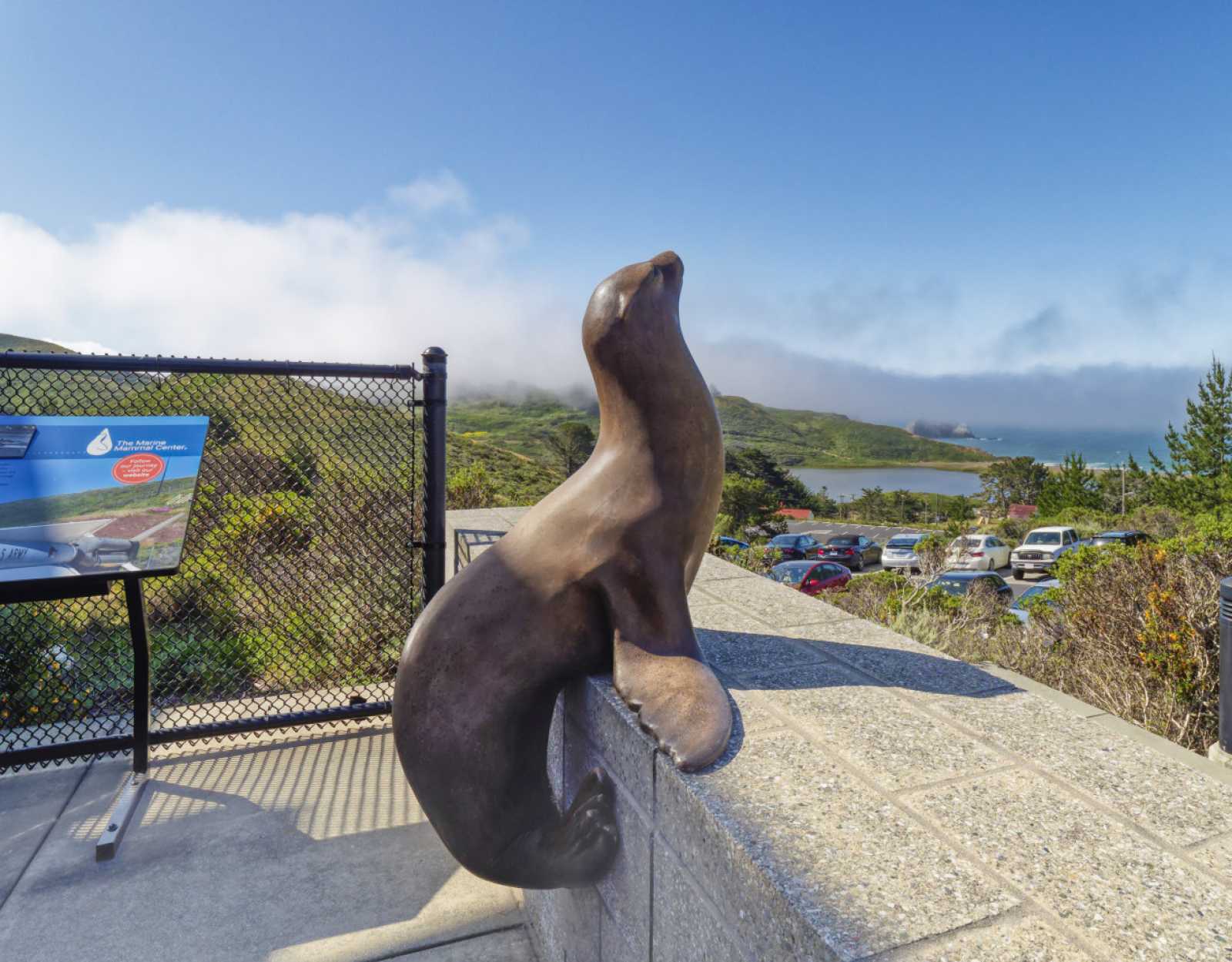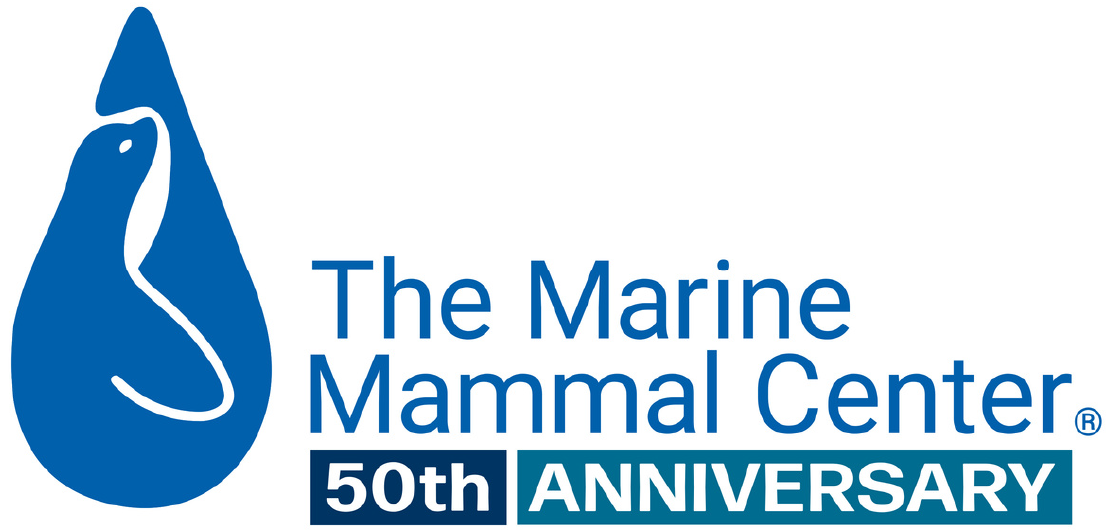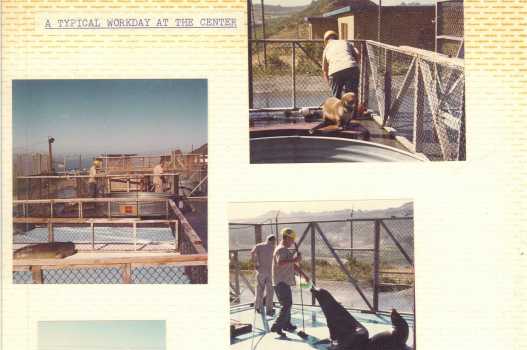
Timeline of The Marine Mammal Center
-
From its very beginnings in 1975, the Center has held marine mammal welfare at its core. This remains true today, while our organization has grown and evolved significantly over the years – especially in the last decade. We continue to respond to marine mammals in distress and provide them with life-saving care, but our mission extends beyond that now. While much of this work is about giving individual patients the care they need for the best possible second chance, it is also about populations as a whole, the health of our ocean and human health.
-
1975
![]()
Founding of The Marine Mammal Center
In 1975, Lloyd Smalley, Paul Maxwell, and Pat Arrigoni establish the California Marine Mammal Center on the site of a former Nike missile site in the Marin Headlands. Permits are acquired, money is raised, and the site is prepared for transformation into a rescue hospital. A sea lion named Herman, with roundworms and tapeworms, is the first patient to be treated and released.
-
1976
![]()
First School Groups Visit The Center
The first school groups take field trips to the Center. This is the beginning of an educational focus that is a key component of the Center's work. The ongoing educational programs have since inspired thousands of school children to become ocean stewards and supporters of marine mammals.
-
1979
![]()
Center Publishes Its First Scientific Paper
The Center publishes its first scientific paper, Nursing Care of Stranded Northern Elephant Seals, co-authored by Lloyd Smalley. This is the first of hundreds of publications in peer-reviewed scientific journals that establish the Center as an important contributor to research on marine mammal health, clinical techniques and the state of the ocean.
-
1985
Humphrey the Humpback Whale Swims up the Sacramento River
A lost humpback whale named Humphery makes international headlines by entering San Francisco Bay and swimming up the Sacramento River. The Marine Mammal Center helps guide him back to sea.
-
1989
![]()
California Sea Lions Flock to PIER 39 in San Francisco, Sparking Collaborative Monitoring and Education Efforts
California sea lions start showing up in large numbers at PIER 39 in San Francisco. The Center collaborates with PIER 39 management to begin monitoring the animals and conducting educational programs. As many as 1,700 sea lions can be seen at PIER 39 on any given day, especially during the winter.
-
1991
![]()
The California Marine Mammal Center rebrands as The Marine Mammal Center to reflect its global impact beyond California's borders
The California Marine Mammal Center drops "California" from the name and becomes The Marine Mammal Center. The name change is in recognition of the scope of the Center's work and how it has an impact far beyond the borders of California. The work of The Marine Mammal Center is truly global in nature.
-
1992
![]()
El Niño causes record marine mammal strandings in California.
The climate phenomenon known as El Niño causes a disruption in the food supplies of marine mammals along the California coast. This results in a large number of marine mammals, especially sea lions, suffering from malnutrition and stranding. In one day the Center cares for a record 210 patients.
-
1993
![]()
The Marine Mammal Center Interpretive Center and Store opens at PIER 39
The Marine Mammal Center Interpretive Center and Store opens at PIER 39 in San Francisco. The new interpretive center helps visitors understand and appreciate the boisterous groups of sea lions that crowd the small floating docks alongside the pier, while the store helps raise money to support the Center's work.
-
1995
![]()
The Marine Mammal Center admits its first sea otter patient
The first sea otter patient is admitted for treatment at The Marine Mammal Center. Since then, hundreds of sea otters have been rehabilitated at the Center. The southern sea otter is classified as threatened under the Endangered Species Act.
-
1998
![]()
El Niño and algal bloom cause record rescues at The Marine Mammal Center
Another El Niño phenomenon occurs in the Pacific Ocean, coinciding with an algal bloom that produces domoic acid. The Marine Mammal Center is the first organization to diagnose domoic acid toxicity in marine mammals and produces a number of reports on the findings. The Center rescues a record 1,129 animals.
-
1999
![]()
Geoffrey C. Hughes Harbor Seal Hospital and Surgery Center opens at The Marine Mammal Center
The Geoffrey C. Hughes Harbor Seal Hospital and Sara Hart Kimball Marine Mammal Surgery Center opens at The Marine Mammal Center. This facility is separate from the areas of the Center that are open to the public and is specifically designed to reduce stress in highly sensitive harbor seals. It also provides a state-of-the-art surgery center for the Center's veterinarians.
-
2000
![]()
David Farmer records elephant seal pups at The Marine Mammal Center for Lord of the Rings sound effects
During the filming of Lord of the Rings, sound engineer David Farmer visits the Center at the height of pupping season. He records the howling of elephant seal pups and uses the recordings as a basis for the sound made by Orcs in the movie. The more savage Uruks are given the voice of barking sea lions.
-
2001
![]()
The Center's Monterey Bay Operations relocates to Moss Landing for enhanced rescue efforts.
The Center's Monterey Bay Operations moves to a new and improved location in Moss Landing. They rescue animals from both Santa Cruz and Monterey counties and also act as a relay stop between operations in San Luis Obispo and Sausalito.
-
2005
![]()
The Marine Mammal Center breaks ground on its San Luis Obispo Operations
The Marine Mammal Center enters its 30th year by breaking ground for its San Luis Obispo Operations. This facility rescues, treats, and transports animals to Sausalito. It is later dedicated as “The Bayswater Memorial Rescue and Triage Center” in memory of donor James C. Cummings by his wife Valerie.
-
2006
![]()
Construction begins on The Marine Mammal Center's $25 million Sausalito headquarters
The Center begins the first full year of construction of its new Sausalito headquarters. The new facility is a $25 million project that features expanded research facilities, species-specific pens and pools, solar panels, a modernized underground water filtration system, state-of-the-art buildings for veterinary, staff, and educational operations, as well as special exhibitions.
-
2008
![]()
Nova documentary Ocean Animal Emergency profiles The Marine Mammal Center's critical work
The Nova documentary Ocean Animal Emergency profiles the Center, describing it as “part emergency room, part rehab facility, and part research lab." Featuring Dr. Frances Gulland, Senior Scientist at the Center, it tells how our important work "...means the difference between life and death for sick and injured ocean animals."
-
2009
![]()
The Marine Mammal Center opens its new Sausalito headquarters and responds to a record 1,704 marine mammals in distress
The Marine Mammal Center ushers in a new era by opening its newly rebuilt Sausalito headquarters in June. The new buildings include a state-of-the-art hospital, modern research facilities, and improved access for the public. That same year, volunteers and staff responded to 1,704 marine mammals in distress, a record in the Center's history.
-
2011
![]()
The Marine Mammal Center rescues its 10,000th sea lion, named Milestone
The Marine Mammal Center rescues its 10,000th sea lion. After receiving more than 1,000 name suggestions from our volunteers, members, and supporters, the animal is given the name Milestone. He is rescued at the Santa Cruz Boardwalk and diagnosed with leptospirosis, a bacterial infection that affects the kidneys.
-
2013
![]()
The Marine Mammal Center celebrates a successful year with a sea lion crisis response and high harbor seal survival rates.
The Center has another momentous year, helping with a sea lion crisis in Southern California, celebrating the highest ever survival rate for harbor seals, and conducting cataract surgery on an elephant seal. A detailed history entitled The Marine Mammal Center, How It All Began - Recollections of One of the Founders is written by Pat Arrigoni.
-
2014
![]()
The Marine Mammal Center opens Ke Kai Ola, a Hawaiian monk seal hospital, successfully releasing its first patients
The Marine Mammal Center opens Ke Kai Ola (“The Healing Sea”), the new Hawaiian monk seal hospital at Kailua-Kona, on Hawai’i Island, aimed at aiding the survival of the most endangered pinniped in the United States. The first patients are brought in and four of them are released back to the ocean.
-
2016
![]()
The Marine Mammal Center rescues a record 133 elephant seal pups during the "Elliepocalypse"
The "Elliepocalypse" washes ashore as the Center rescues a record breaking number of elephant seal pups. A total of 133 elephant seals were treated and released at the Center in 2016.
-
2018
The Marine Mammal Center responds to a major leptospirosis outbreak affecting over 220 California sea lions
More than 220 California sea lions are impacted as the Center responds to the second largest leptospirosis outbreak on record. Researchers study potential long-term implications of future environmental disturbances on ecosystem health, such as infectious disease.
-
2019
![]()
The Marine Mammal Center enhances whale entanglement response by collaborating with experts from two Bay Area nonprofits
The Marine Mammal Center expands capacity to respond to entangled whales and reduce these tragic occurrences. The addition of experts from two Bay Area nonprofits, Golden Gate Cetacean Research and California Whale Rescue, uniquely position the Center to lead research and response efforts.
-
2020
![]()
The Marine Mammal Center continues animal rescue and virtual education during the COVID-19 pandemic
Throughout the COVID-19 pandemic, The Marine Mammal Center remains operational for animal rescue, response and rehabilitation as veterinary care and all healthcare services provided to animals are considered essential services while finding new ways to continue our educational mission virtually.
-
2021
![]()
Research reveals that a herpesvirus causes cancer in one in four adult California sea lions, providing insights for human cancer studies
After more than three decades of research, scientists have proven that the cancer affecting up to one in four adult California sea lions that received a necropsy at The Marine Mammal Center is caused by a sexually transmitted herpesvirus. Research also showed that pollutants such as PCBs and DDT play a significant role as co-factors in the development of this cancer. The cancer has clear parallels to cervical cancer in humans and provides a helpful model for human cancer study.
-
2023
![]()
The Marine Mammal Center launches a new educational experience at PIER 39, engaging 74,000 individuals in ocean conservation
The Marine Mammal Center opens a brand-new educational experience for all ages at San Francisco's PIER 39 with dockside docents and a temporary pop-up experience, connecting with 74,000 individuals to drive transformative behavior change in support of a healthy ocean.
-
2024
![]()
The Marine Mammal Center acquires property in Castroville for its Monterey Bay Operations
The Center acquires property in Castroville, which will be the home of its Monterey Bay Operations moving forward.
-
2024
![]()
The Center rescues its 26,000th animal
The Marine Mammal Center rescues its 26,000th animal.
-
2024
![]()
The Marine Mammal Center kicks off its 50th anniversary celebrations with Ke Kai Ola's 10-year anniversary, celebrating growth in the Hawaiian monk seal population
The Center begins its 50th anniversary celebrations. The festivities commence on September 28, with Ke Kai Ola's 10 year anniversary celebration: "Ke Kai Ola Kaiāulu Fest: Seal-abrating a Decade of Ocean Conservation." In addition to honoring two milestone anniversaries, the party also celebrates of the growth of the Hawaiian monk seal population, which surpassed 1,500 in 2022 for the first time in 20 years. The 2023 population estimate was over 1,600.
-
2025
![]()
The Marine Mammal Center celebrates its 50th anniversary in 2025 with donor releases, virtual events, and a special October celebration in Sausalito
The Center spends 2025 celebrating its 50th anniversary! Highlights include anniversary donor releases throughout the year, virtual events, and a special event in Sausalito in October 2025. Check our events page for the latest updates!
































